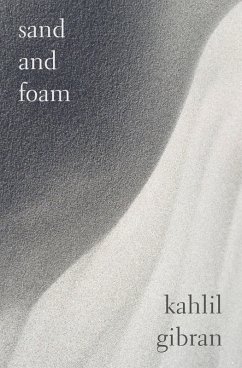A collection of inspirational aphorisms, parables, and poems by the acclaimed author of The Prophet.
Published in 1926, Sand and Foam showcases Kahlil Gibran's ability to capture complex ideas in just a line or two. As he touches on themes like faith, humanity, youth, knowledge, greed, and apathy, his words are sure to motivate and inspire readers in search of guidance in their daily lives.
Gibran was a Lebanese American writer, poet, visual artist, and philosopher. His work The Prophet has been translated into over one hundred languages and has not been out of print since it was originally published in 1923. Fans of Gibran's work include David Bowie, Johnny Cash, John Lennon, and Elvis Presley.
Published in 1926, Sand and Foam showcases Kahlil Gibran's ability to capture complex ideas in just a line or two. As he touches on themes like faith, humanity, youth, knowledge, greed, and apathy, his words are sure to motivate and inspire readers in search of guidance in their daily lives.
Gibran was a Lebanese American writer, poet, visual artist, and philosopher. His work The Prophet has been translated into over one hundred languages and has not been out of print since it was originally published in 1923. Fans of Gibran's work include David Bowie, Johnny Cash, John Lennon, and Elvis Presley.
Dieser Download kann aus rechtlichen Gründen nur mit Rechnungsadresse in A, B, BG, CY, CZ, D, DK, EW, E, FIN, F, GR, HR, H, IRL, I, LT, L, LR, M, NL, PL, P, R, S, SLO, SK ausgeliefert werden.




